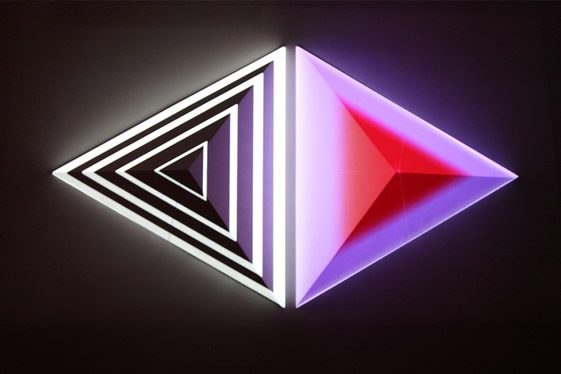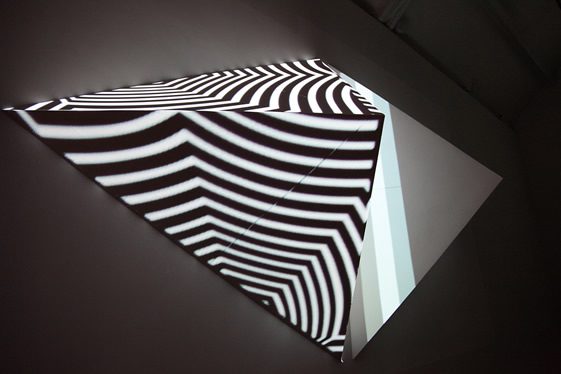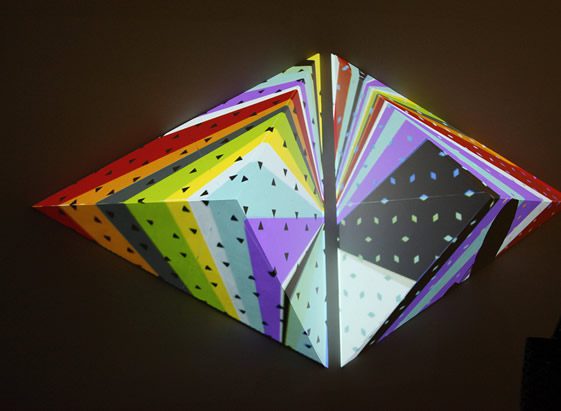Dev Harlan is a self-taught, multidisciplinary artist based in New York. We have been consistently blown away by his hybrid work combining the physical and the virtual within the use of sculpture, light and projection – it’s light-mapping, but not as we know it. We Heart caught up with Dev to talk New York artscene, what drives him and his place at the forefront of a new mode of media arts practice…
Name: Devan Harlan
Age: 32
Occupation: Artist & Designer
Hometown: San Francisco, CA
Location: New York, NY
Website: www.devharlan.com
Is being a successful artist in NYC as good as it sounds – or are there ups and downs?
Well New York certainly offers a lot of opportunities, and is a great place to be if you have creative pursuits, but I think being successful in any discipline is just matter of putting in the time and hard work, New York won’t do that for you. Also success completely depends on how you define it, and from my vantage point I think there’s still a lot lot be accomplished.

You state on your website you’re self-taught – how and why did you become an artist?
I think being self-educated I’ve always been a bit anti-establishment, and have operated outside the norms. Creative instincts were sort of second nature, but I channeled them into a commercial design path. The reality however is that unfettered creative freedom is a kind of holy grail that I think cannot truly exist in the corporate world, tho I had tried to believe otherwise.
Recently I’ve found that operating in a purely fine art context allows me to pursue ideas in a much more rewarding fashion. There’s too much ground to explore, it’s not worth allowing your creatively to be shackled.
You have a very unique, cross-disciplined approach to art – can you explain your style and how you developed it:
Early on I was also heavily influenced by the kind of rogue tech-art scene in San Francisco that involved hardware hacking, game-mod’ing, video synthesizers and all sorts of non-traditional approaches to using video. I had many friends doing unorthodox things with projectors and spent years learning to program custom real time 3D applications.
Simultaneously however I was also learning and using industry standard tools for design and 3D animation. I think when it came together was when I gained a desire to build physical objects, a pursuit which I’m still studying, and all the techniques sort of merged in a way that’s been very satisfying.

You work is bold and inspiring – who or what influences and inspires you?
I think visually I’m definitely taking some cues from ideas developed in the 60’s Op-Art movement, and artists like Bridget Riley and Victor Vasarely are some obvious favorites. And while this goes hand in hand with the psychedelic movement as well, I think I’m attempting to modernize the practice a bit.
On the other spectrum I’m deeply inspired by ancient societies, and man’s natural instinct for object making and ultimately building massive lasting edifices, another type of transcendentalism, a physical object that transcends time. And so the inspiration of the work is simultaneously sculpture that feels like a transcendental edifice, and a sensory sort of transcendentalism induced by light and color.
You recently collaborated with Olek – can you tell us about this project?
Yes, Olek and I had shown work together with Christopher Henry gallery, and after getting to know each other’s practice wondered, could these things be merged? We decided to use her ubiquitous crocheted street bicycles as the template, but as a digitally animating video sculpture. We began by building a sculpture of a white bicycle, and then we shot stop motion and video of the crochet process for all the pieces that would go on a real bike. All of this was then merged with the graphic and pattern based animation I’ve been developing and then projected back onto the real bicycle sculpture.
The whole process was good fun, but took many long hours and late nights of pretzels and peanut butter.
What can we expect in the future from lightmapping and 3D sculptural artists like yourself? Are there any limits?
I think architectural projection is finally hitting mainstream here in the states, but I think future applications are really going to involve indoor projection rather than outdoor . Using projection as a pure lighting source, or as a non-invasive user interface on surfaces and objects, and perhaps coming from a pico projector built into your phone.
Limitations are always being created and destroyed, so I’m never worried about limitations, ultimately it’s the concept that matters, and if the technology has to catch up it will.

If you could chose any place or subject to work on, as a canvas – where or what would it be?
Sure maybe the Caryatid Porch of the Erechtheion in Athens?
Finally, what’s next for Dev Harlan – are there any exhibitions, projects coming up?
Always busy. Planning to participate in the annual Festival of Ideas for the New City, which is going to have a outdoor video component called Flashlight. Am working on putting together a show in Berlin this summer, and have my first solo show with Chris Henry Gallery slated for next September. Also am producing editioned DVD’s from the most recent work with Olek, so look for those to be available shortly!








